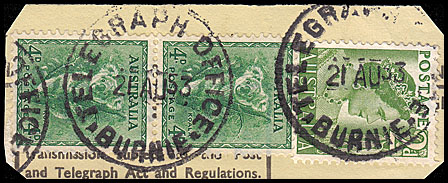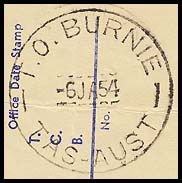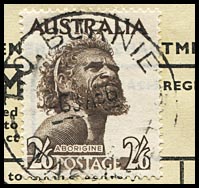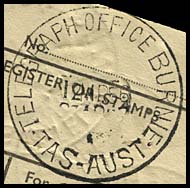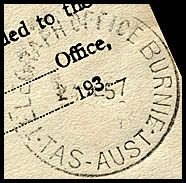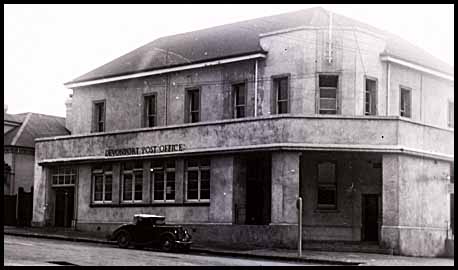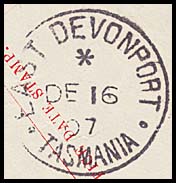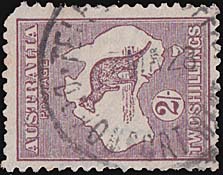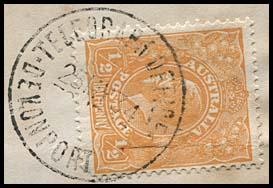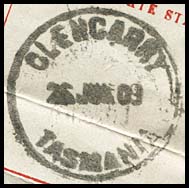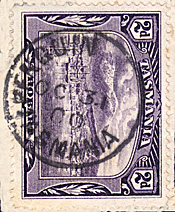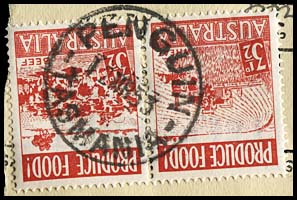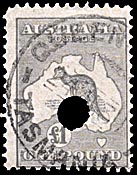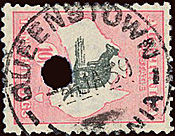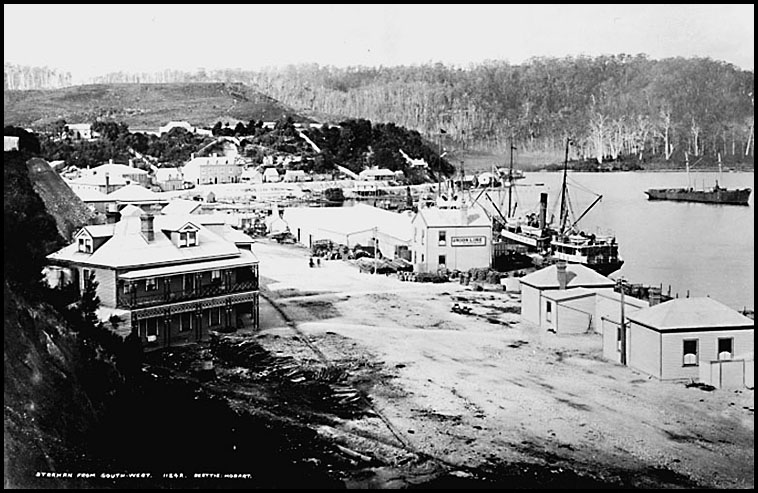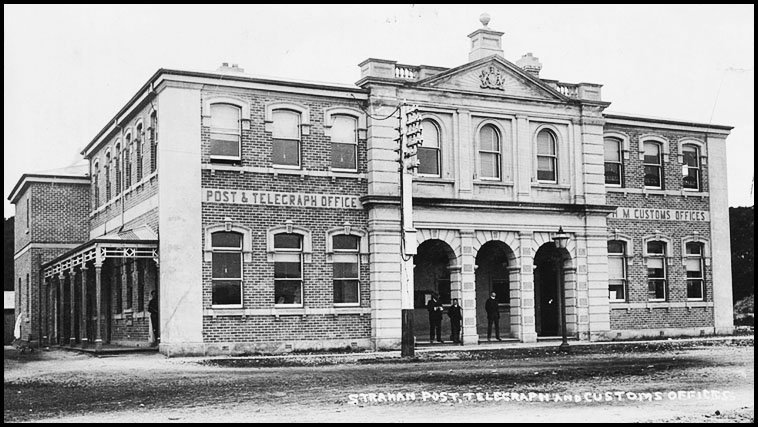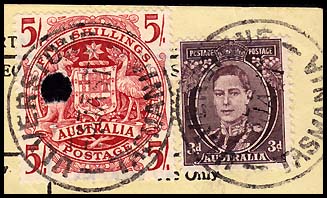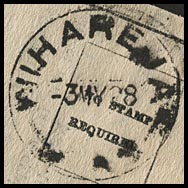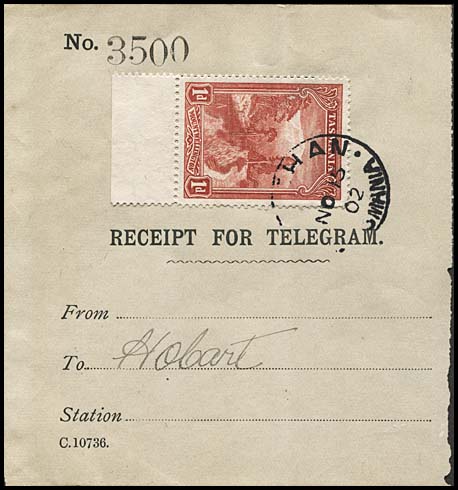Telegraph Offices in the North-west region.
- Australia 1901-1988
- New South Wales
- Queensland
- South Australia
- Tasmania
- Victoria
- Western Australia
- International
- Special aspects
The Post & Telegraph Offices in the North-West region of Tasmania are listed in the table:
|
The Telegraph Office was opened in 1875 at the Post Office. The Post Office had been opened on 1 July 1847 but was closed on 30 September 1849. It then reopened on 1 July 1851 as Emu Bay but was then renamed Burnie on 1 January 1882. The building of a joint Post & Telegraph Office was let for tender in late 1900 but it was not until January 1923 that the announcement saying "commencement has at last been made with the demolishing of the old weatherboard building which occupied the site on which the new Post and Telegraph Office is to be erected. It ls understood that an early commencement with the construction of the new oflice is to be made. It will be situated in Wilson street, directly opposite the Burnie Motor Garage". Burnie became the main port for the west coast mines after 1897 when the Emu Bay Railway opened. Personnel: 1875: Annie Cocker, at the age of 18, was appointed in charge of the joint office in 1875. She held that position until 1883. The P&T Office also fielded its own cricket team. |
Postal date stamps. Ingles (1975, p. 88) suggests that the circular date stamps which replaced the numeral obliterators - especially that shown here as Type 1a - were only occasionally used on mail. Their use was mainly in the telegraph section. |
||
| Type 1: Solid stops.
TASMANIA at base. Used: 21 April 1898 to 18 July 1901. |
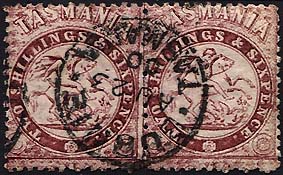 23 August 1900. Tasmanian Stamp Auctions, February 2013 |
|
| Type 1a: circle cross stops.
TAS. at base. Diameter: 24.5 mm. Used: March 1900 to December 1912. |
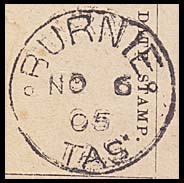 6 November 1905. Used on TI-DO-1B. |
4 July 1905 on TI-DO-1A. |
| Later post-Federation date stamp. | 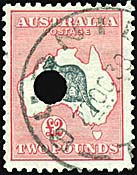 22 October 1938. Used on £2 red and black Kangaroo on Map with small telegraph puncture. |
|
Telegraph Office/ Small square dots. Long date line.
|
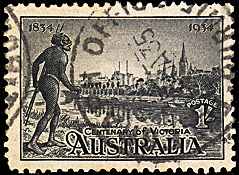 8 January 1935. Provenance: Hugh Freeman, Johnstone. |
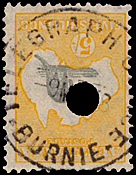 9 M? 1938. Used on 5/- red and black Kangaroo on Map with small telegraph puncture. |
|
||
T.O. Burnie/
|
Used on AW-DO-10A (52). |
|
| Telegraph Office Burnie/ TAS-AUST. Very small side arc between TAS and AUST. Two formats:
|
|
|
|
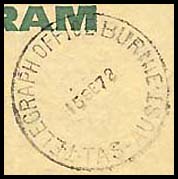 15 September 1972 |
|
| Carrick.
The Telegraph Office was opened in 1878. |
 |
|
A Telegraph Statioon opened at Cressy in July 1891. |
|
In 1892, a Telegraph Office was opened at the Deloraine railway station and it operated through to 1959. The Post Office had opened in 1836 but closed in 1841 only to reopen in 1845. |
|||
Diameter: 24 mm. Date in two lines. No separation marks. Rated: RR (in blue). Campbell et al (1962, p. 108) indicates a type 3 canceller, with the date in one line - was used in blue in February-March 1910. There is no mention of their type 1 canceller being used in blue. |
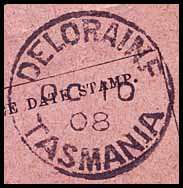 10 October 1908. Used in black on TI-DU-1. |
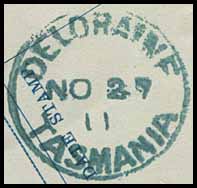 27 November 1911. Used in blue on TI-DO-3B 8 November to 1 December 1911. Also known in blue on TI-DU-4. |
|
|
 1929 on Due PC.jpg) 12 August 1929. |
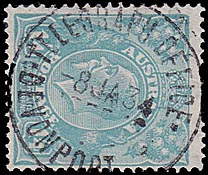 8 January 1934. Tasmanian Stamp Auctions |
Tasmanian Stamp Auctions |
Devonport:
|
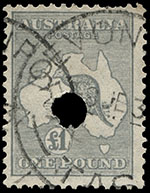 8 June 1937. On £1 Kangaroo on Map C of A multiple watermark with 5 mm Telegraph puncture. |
|
 14 June 1950. Used on telegram piece. |
|
|
Approval to establish a Post Office was given on 31 August 1860. A Telegraph Office might have been established in 1873 or soon after when the Deloraine to Latrobe line was constructed. |
|
| The usual Type 1a postal canceller was used for telegrams. It had been damaged with a break below TA. There was a dot or hyphen between the two words. | 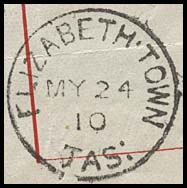 24 May 1910. Used on TI-DO-2B. |
|
Located near West Tamar, a Post Office was opened at Glengarry on 1 December 1878. |
|
No special date stamp was issued for use with telegraphs and the usual postal date stamp was used. Size: 25 mm. |
Used on TI-DO-2C. |
| Latrobe.
|
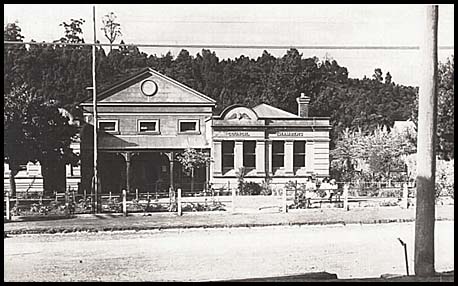 Latrobe P&T Office (left) and Council Chambers. |
|
|
The Post Office was opened on the site of the original Exeter site in 1911 when a new Exeter Post Office and that for Tatana were opened nearby. Personnel: On 19 November 1943, the Hobart Mercury carried a story of the retirement of the Postmaster at Loira - Mr George Williams. He was then 92. He was first appointed Postmaster to the Office then bearing the name Exeter in 1895. He carried the mail from what was then Crossroads to Exeter on foot. In 1907, the Exeter Post Office was moved from Mr Williams' shop but it returned in 1912 due to the orchard industry requiring another Post Office. The new Office was named Exeter while the old Office at Mr Williams' shop changed name to Loira. Mr Williams continued to operate the Post Office until ill health interferred. |
|
| Regatta Point.
The Telegraph Office (west of Queenstown) opened |
|
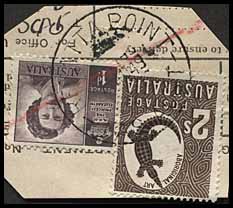 1 November 1949. |
|
|
| Stanley (formerly Circular Head).
The Telegraph Office opened in 1876. The Post Office had opened as Circular Head on 1 July 1845 and changed its name to Stanley in 1882. In April 1894, Mr. Otto Morley was transferred from the Telegraph Office in Hobart to take charge of the Post & Telegraph Office in Stanley. The Telegraph Office was distinct from the cable office. |
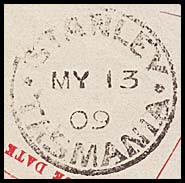 |
Stanley (13 May 1909). Diameter: 23 mm. Used on TI-DO-2b and (in 1897) on TI-DO-5A. |
|
|
The Post Office originally opened as East Strahan about 1 Ocober 1891 but changed name to Strahan on 25 January 1893. |
|
|
Tatana - Exeter - Loira. There has long been confusion about the Post/Telegraph Offices in this area of West Tamar. It is useful to quote some recent history before going into the past: On 19 November 1943, the Hobart Mercury carried a story of the retirement of the Postmaster at Loira - Mr George Williams. He was then 92. "He was first appointed Postmaster to the Office then bearing the name Exeter in 1895. He carried the mail from what was then Crossroads to Exeter on foot. In 1907, the Exeter Post Office was moved from Mr Williams' shop but it returned in 1912 due to the orchard industry requiring another Post Office. The new Office was named Exeter while the old Office at Mr Williams' shop changed name to Loira. Mr Williams continued to operate the Post Office until ill health interferred with his activities". The Post Office at Exeter - according to PMG records - changed name to Tatana in 1911. It appears however that, due to arguments between early settlers, a different location was selected for the Tatana Office. This Tatana Office was due to open on 1 January 1912 but there was a delay of a few weeks due to "a protest against the misnomer which was most unpopular". Loira was opened at the former Exeter site in 1911 or 1912. The argument was still continuing by 20 March 1912 when the Deputy-Postmaster noted that both the Exeter Post Office and the Tatana Post Office were both outside the surveyed and proclaimed town of Exeter. Confusion reigned - and still does. In a letter to the Editor of the Launceston Examiner on 9 September 1912, Mr. F. Payne-Gallwey noted:
In August 1913, the Deputy Postmaster- General again refused to change the town name of Tatana to Exeter. In February 1914, there was a petition circulating in the Exeter district to change the name of the post office from Tatana to Exeter. "To call the post office by such a name is no doubt a great inconvenience, and causes a lot of extra trouble to the public and postal authorities". On 3 November 1914, the Launceston Daily Telegraph noted:
On 9 April 1915, the Launceston Examiner reported:
On 17 May 1916,
The latest known date stamp for Exeter is 10 January 1912 (Avery et al, Vol 2, p. 91). |
 1955 Feb 13.jpg) Tatana - 13 February 1955. |
| Waratah.
P&T opened 1882 with a replacement building in 1913. see http://www.think-tasmania.com/waratah/ |
|||
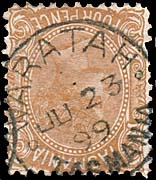 |
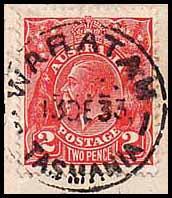 |
||
|
Located on the highway between Melton Mowbray via Bothwell to Deloraine.
|
Rated: RRRR. |
